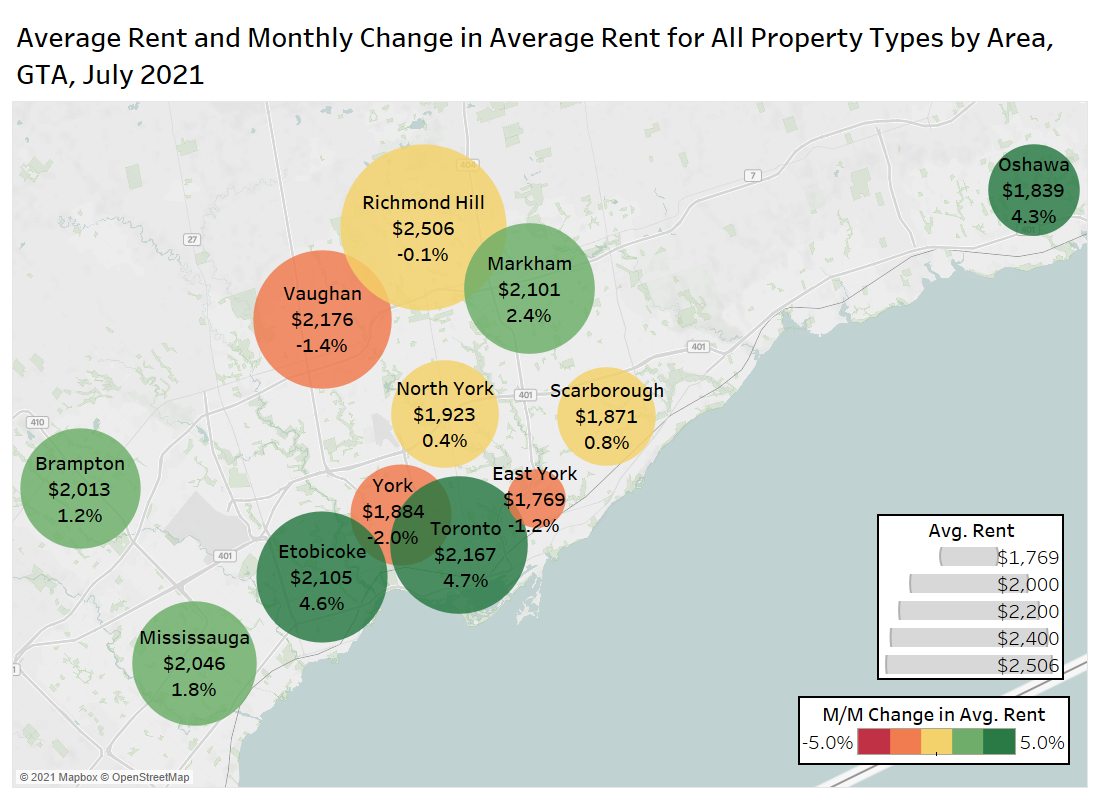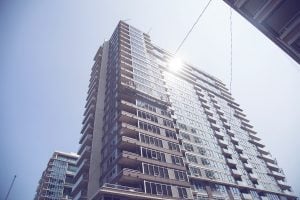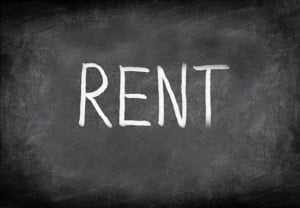Average Rent and Monthly Change in Average Rent in the GTA
The average rental rates continue to rise in the GTA after reaching a local low in April 2021. In July 2021, the average rental rate increased month over month by 3% to $2,078. Heading toward the latter half of the year, we can expect rental rates to continue their steady rise as the country returns to normal.
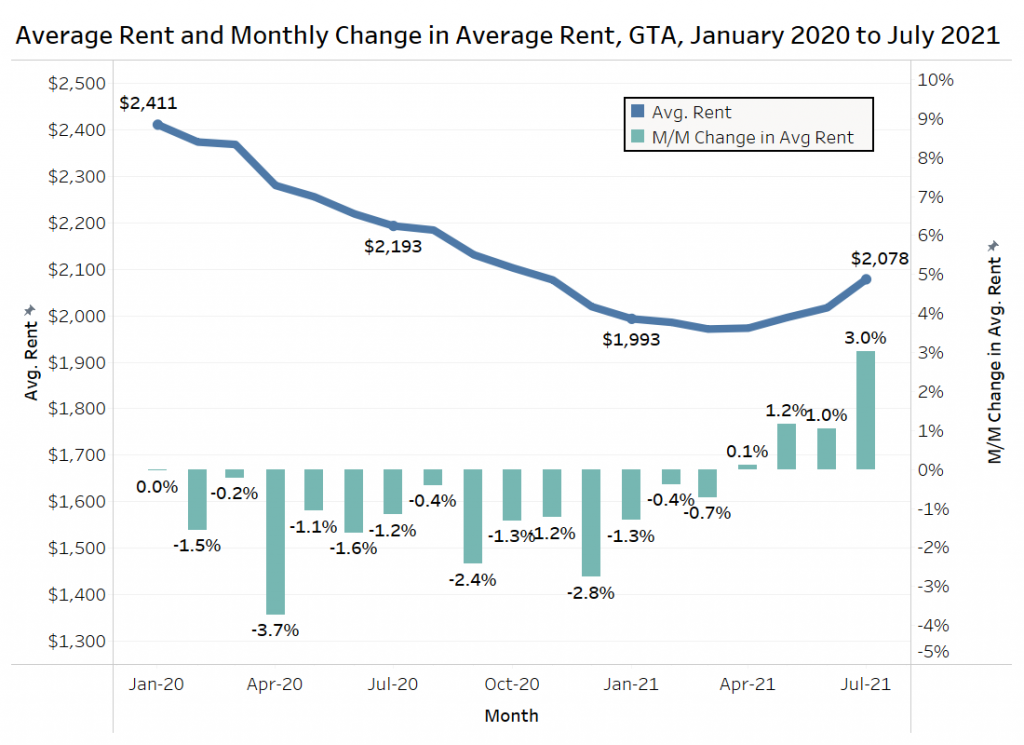
Average Rent by Bedroom Type in the GTA
For all property types, the average rental rates are clearly rising across the board by bedroom type.
The largest increase between their 2021 market-low to July 2021 was experienced by units with four or more bedrooms, moving from $3,160 up to $3,518, an increase of 11.3%.
One-bedroom units experienced the smallest increase, moving from $1,763 to $1,773 in July 2021, an increase of less than 1%. It is clear that tenants are still looking for more space, and one-bedroom units are not in as high demand as the pre-pandemic period.
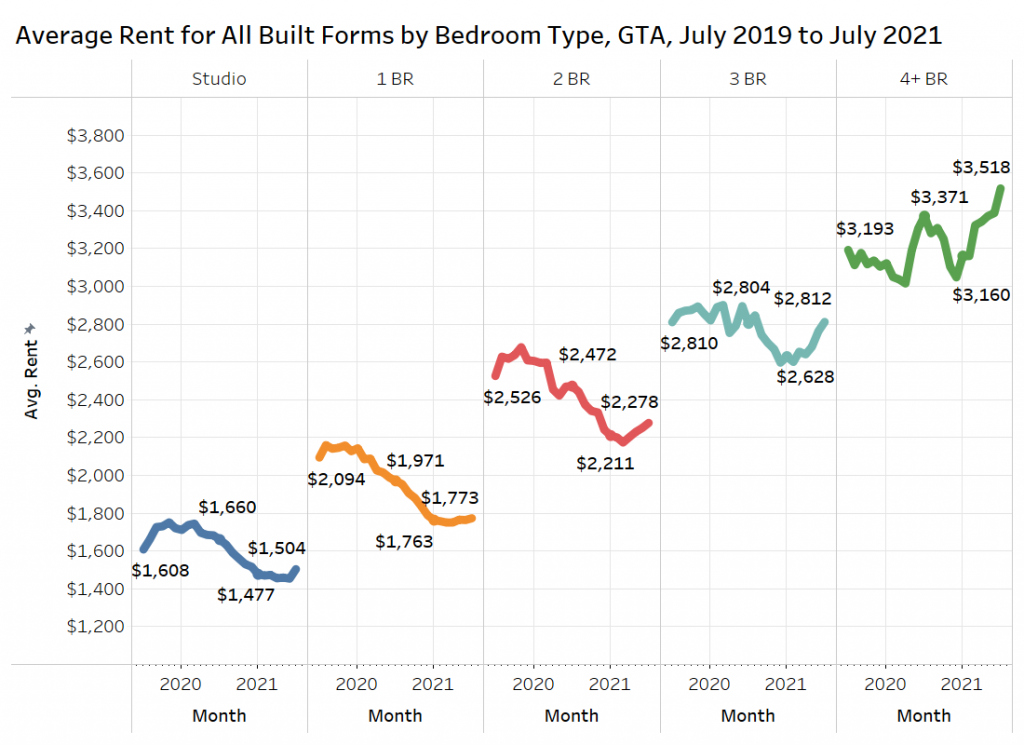
Average Rent Per Square Foot by Bedroom Type in the GTA
The average rent per square foot for condo and rental apartments have generally increased from January 2021 to July 2021 with the exception of studios.
Studio units are the only bedroom type that experienced a decrease in average rent per square foot, moving from $3.55 in January 2021 to $3.48 in July 2021 (a decrease of 2%).
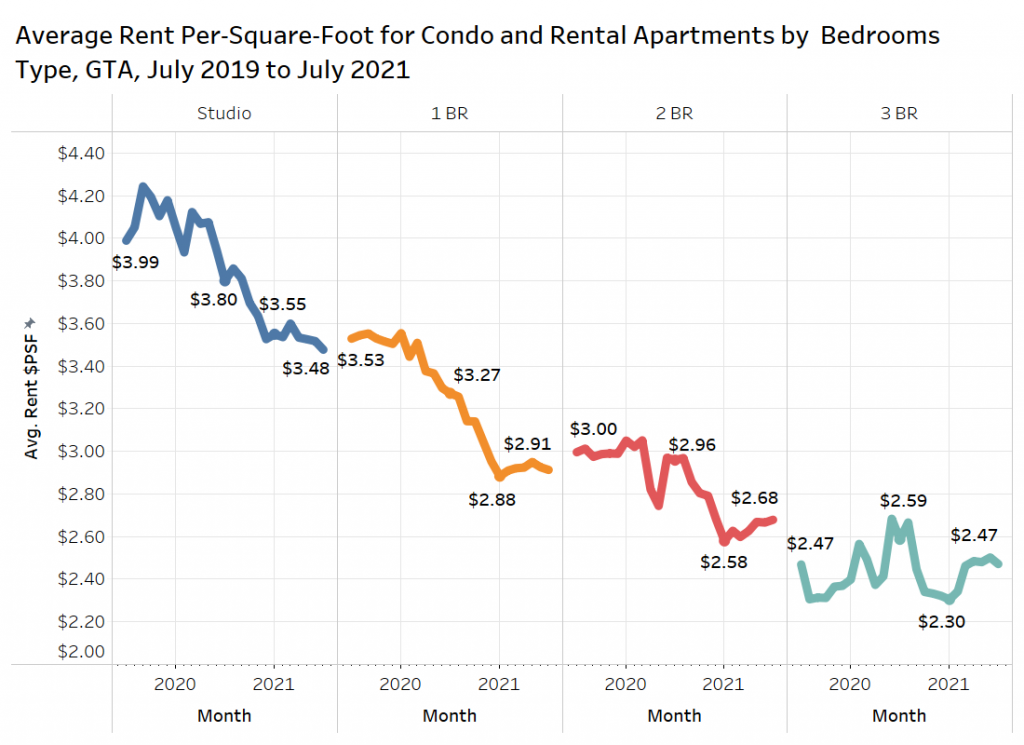
Two-bedroom condo and rental apartments have performed well recently, increasing from a low of $2.58 per square foot to $2.68 per square foot in July 2021, an increase of 3.9%.
Average Rent and Monthly Average Rent by Area in the GTA
The average rent has increased in most municipalities and former municipalities in the GTA month over month, with old Toronto experiencing the largest monthly increase at 4.7%, and Etobicoke close behind at 4.6%.
The areas experiencing the largest decreases include Vaughan, York, and East York. It should be noted that these three areas have relatively small sample sizes in relation to other municipalities, and the decline could be compositional, meaning a change in the unit size or location of listings, as opposed to a decrease in demand.
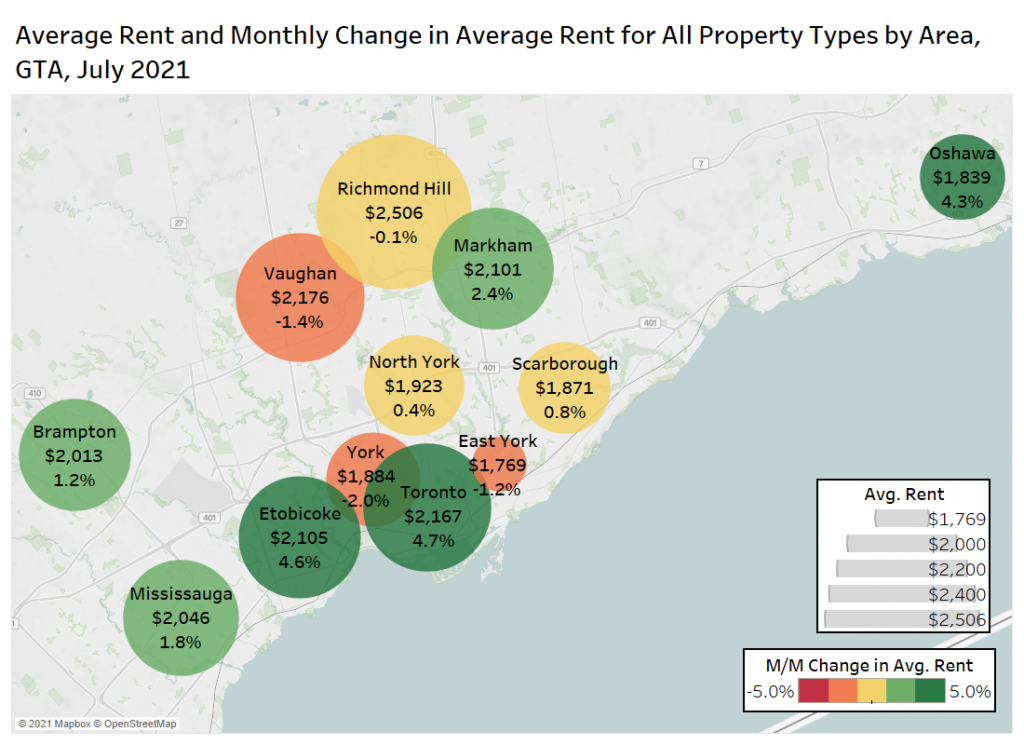
Three-Month Moving Average of Average Rent
The three-month moving average is a usual measure to eliminate some of the monthly compositional issues within a sample and get a better sense of long-term trends. The average rental rates for single-family homes and townhouses clearly point to an increasing trend, while the moving average for condo, rental and basement apartments suggest a slight upward trajectory, as these product types are more flush with supply.
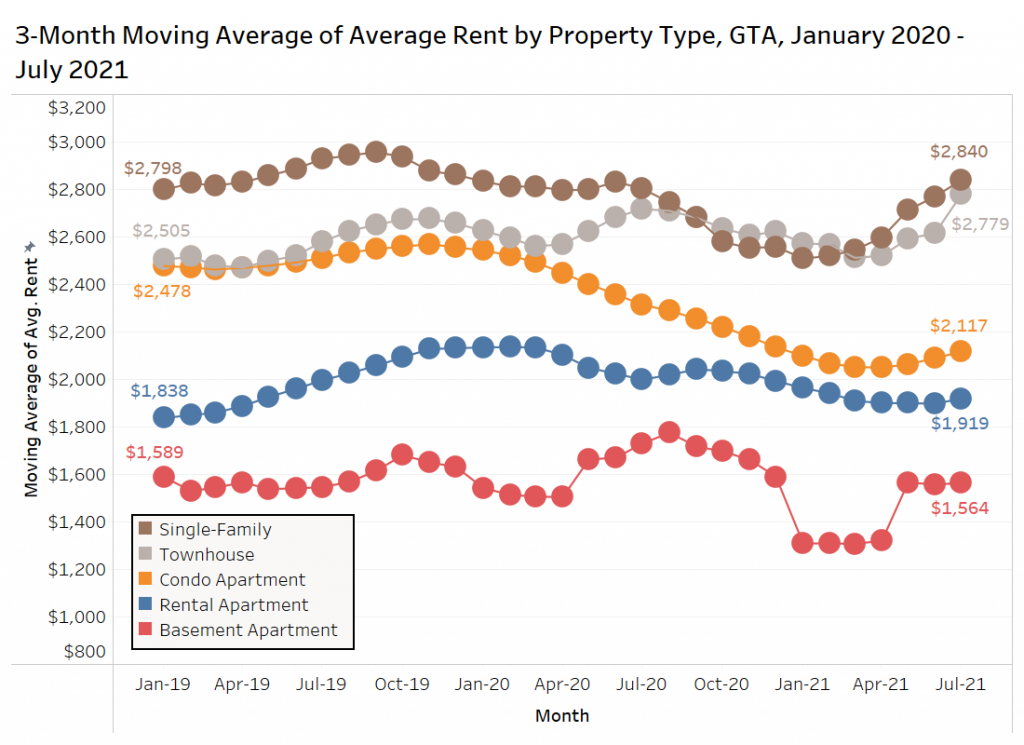
Minimum and Maximum Average Rent by Bedroom Type
The average rent in 2021 for condo and rental apartments was highest for one-bedroom units in Oakville, while the average rent for two-bedroom units was highest in Toronto, and the average rent for three-bedroom units was highest in Vaughan. For one-bedroom, two-bedroom, and three-bedroom units, the lowest average rent in 2021 was found in Whitby.
The lower rents in Whitby compared to Oshawa show there has been more new rental supply in Oshawa recently compared to Whitby. Living in a two-bedroom unit in Whitby as compared to the former City of Toronto saves a tenant about $900 per month in accommodation costs.
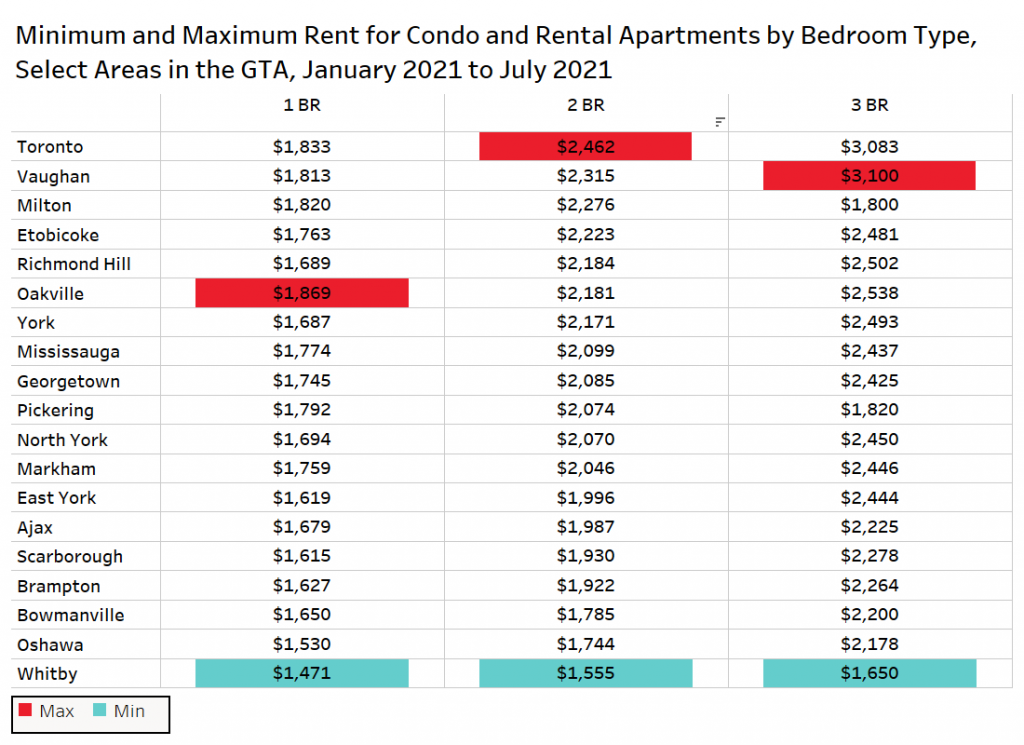
Share of Rental Listings
The unit composition of condo apartment listings has seen an increase in the number of one-bedroom units over the years, from 59% in July 2019, to 61% in July 2020, to 66% in July 2021. New condos completed over the last couple of years have a higher share of small units. Also, tenants have been searching for suites with a den to work from home during the pandemic, decreasing demand and increasing listings supply for smaller suites.
The share of two-bedroom units has decreased over the same period from 33% in July 2019 to 27% in July 2020 to 25% in July 2021.
The unit composition for rental apartments has stayed relatively unchanged in the month of July from 2019 to 2021. The difference between rental apartments and condo apartments is rental apartments have a higher share of studios and three-bedroom units.
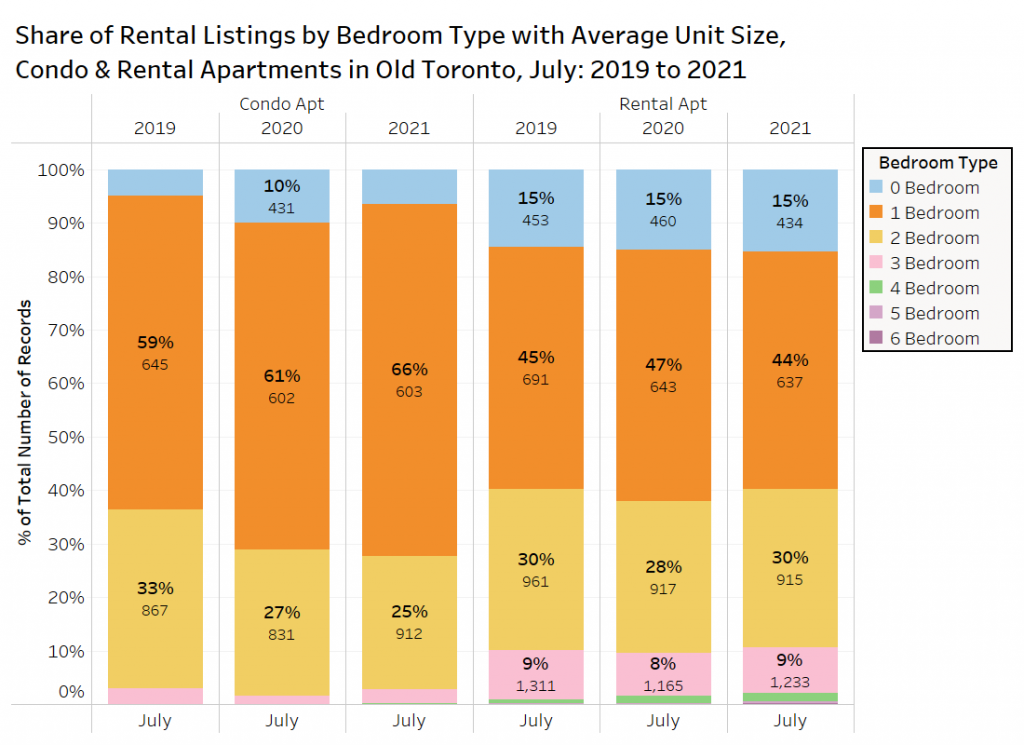
Average Rent and Annual Change in Average Rent
The following chart looks at rental rates in old Toronto, using the pre-amalgamation boundaries.
The average rent for single-family homes has stayed relatively stable over the last four months since experiencing some early gains. In July 2021, the average rent for a single-family home was $3,207 per month, a year-over-year increase of 13.2%.
Condo and rental apartments have experienced small increases in average rental rate since January 2021. In July 2021, condo apartments had an average rent of $2,204 per month, a year-over-year decrease of 4.2%, while rental apartments had an average rent of $2,103 per month, a year-over-year decrease of 2%.
Townhouses experienced the largest increase in average rent, moving from $2,785 per month in January 2021 to $3,170 per month in July 2021. There are fewer townhouses for rent on TorontoRentals.com, which leads to the monthly rent volatility.
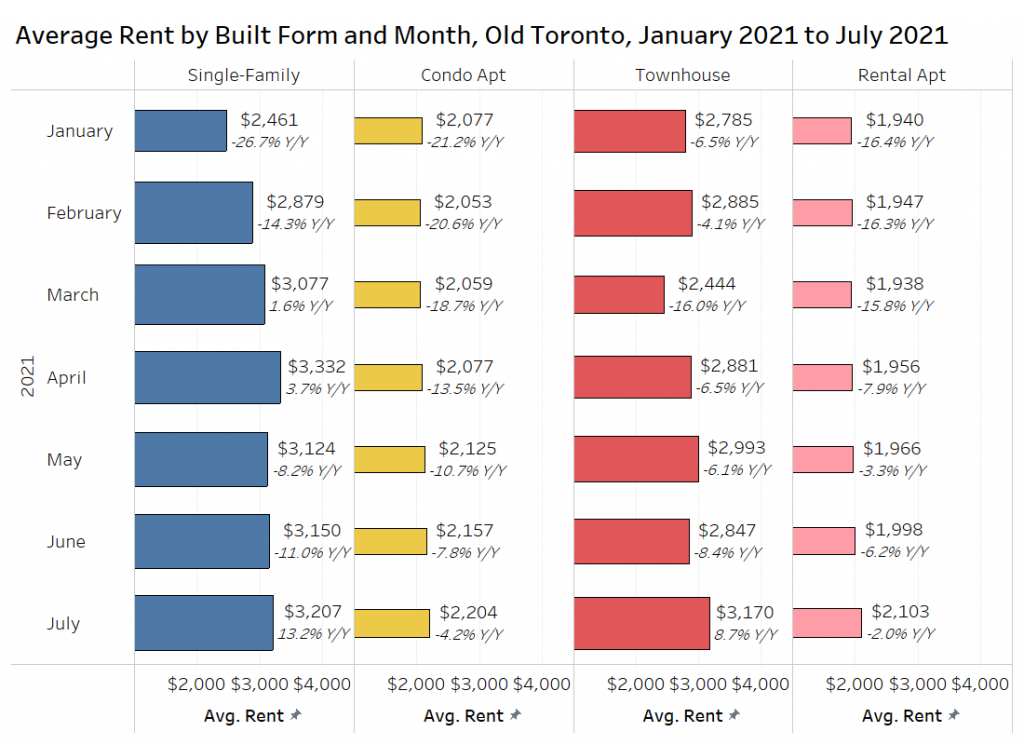
Average Size and Average Rent Per Square Foot for Condo Apartments in Select Neighbourhoods
Looking at select neighbourhoods in Toronto using data from May to July in 2020 and 2021, the average rent per square foot for all of the select neighbourhoods was significantly higher last year compared to this year, while the average size has generally stayed the same.
Bay Street Corridor stands out as the neighbourhood where the average unit size for condo apartment listings has increased in 2021. Many of the largest units outside of downtown are being snapped up quickly and have not stayed on TorontoRentals.com as active listings very long.
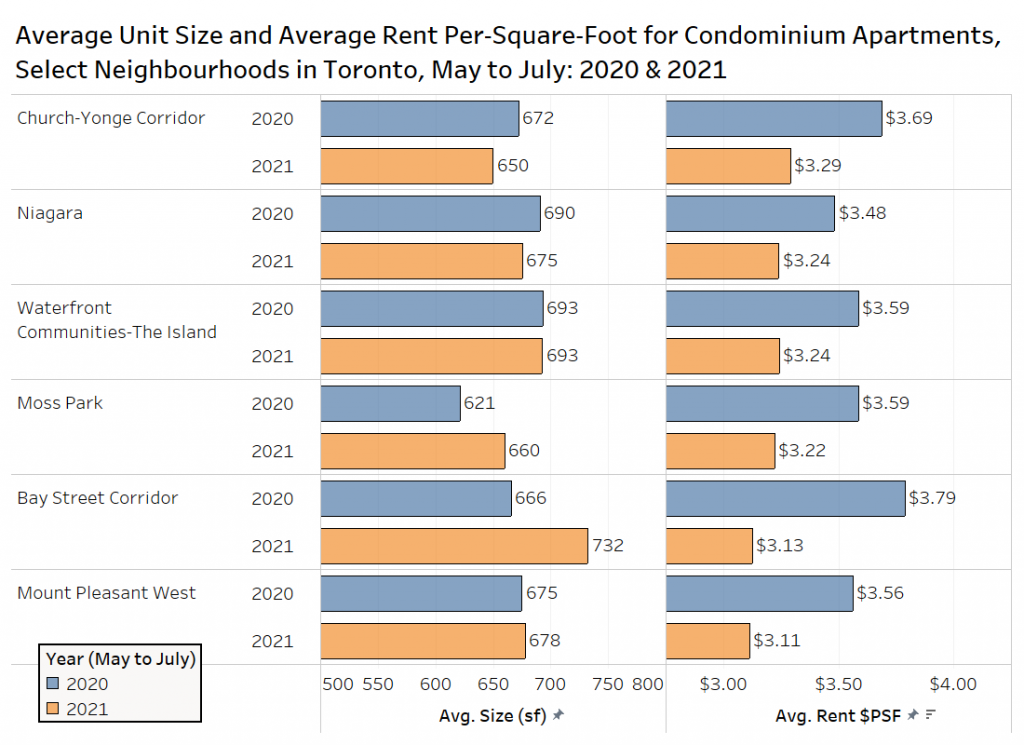
Average Rent Per Square Foot in Select Buildings in Etobicoke
Looking at a sample of condo and rental apartment developments in Etobicoke, we can see that the average rents per square foot have generally decreased from 2020 to 2021. Eau de Soleil – Water Tower stands out as the development experiencing the largest increase in average rent per square foot, moving from $3.48 in 2020 to $3.81 in 2021.
We can only conclude that if you’re spending more time in your suite, you want a unit with a great view of downtown and Lake Ontario, which Eau du Soleil and Cove at Waterways provide. One of the bigger rent declines was at One Valhalla which overlooks Highway 427, rents declined from $3.31 psf to $2.71 per square foot year over year, a drop of 18%.
Conclusion
As Canada continues its return to normalcy, rental rates in the GTA continue to rise heading into the latter half of 2021. While still far off from the highs seen in 2019, the average rents in the GTA will continue their upward trajectory, with single-family homes and townhouses leading the way.
Look for the rental rates in condo and rental apartments to experience a sharp increase if working from home becomes unfashionable and employers start to require employees to be back in the office more frequently.
Leasing agents have reported bidding wars on prime rental suites, and new purpose-built apartments are seeing suites lease up much quicker than last year. Rental incentives are also drying up. However, it appears that tenants are still looking for larger accommodations outside of the downtown core, signalling that many don’t believe or expect to be going back to the office full-time in the immediate future.
Greater Toronto Area Rent Levels
This analysis looks at aggregated data based on TorontoRentals.com listings from $500 to $5,000 a month for single-family homes, townhouses, rental apartments and basement apartments.
